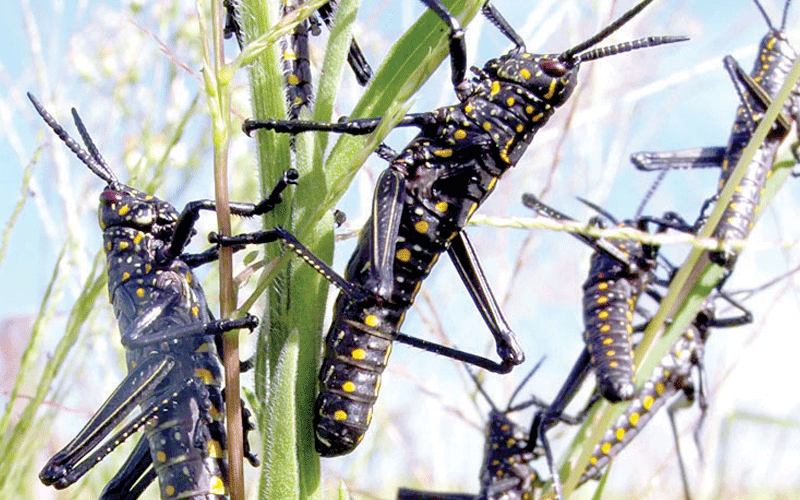Change strategy to ward off desert locusts invasion

For the last two months, Kenya has been in the grip of a major desert locust invasion.
Sweeping down from Ethiopia through Somalia, the locusts entered Kenya through the North Eastern part and started rapidly inwards. Not much was done in the initial weeks to stop their spread.
But now the chickens have come home to roost, and the locusts are now threatening agriculturally productive areas.
They have now crossed into Isiolo, Meru and Kitui counties, and experts are worried that their trajectory is towards the Rift Valley, Kenya’s breadbasket. Their march is relentless.
Is Kenya losing the battle against the locusts? Clearly, it is not winning it—not yet.
Despite new Agriculture Cabinet Secretary, Peter Munya, hitting the ground running, the march has not been halted.
There is now a real risk that the locusts will devastate crops, resulting in a massive food shortage. Desert locusts are the most virulent of all locust species.
Kenya could face a serious famine. The Food and Agricultural Organisation (FAO) estimated one large swarm in Northeastern measured 2,400 square kilometres, comprising 200 billion locusts, with the potential to consume food in a day that could feed 84 million people.
In Ethiopia, there have been 100 per cent crop destruction in areas they swarmed.
The rains that started late last year and onto this year have been a big boon for patoralists and farmers.
For pastoralists, the pasture has been in plenty, as well as water. But they now stand to lose all that if locusts destroy their vegetation.
Farmers stand to lose their crop. Worse still, experts are warning the long rains could trigger a fresh round of breeding, increasing the swarms by over 500 times.
The government must, therefore, immediately institute a mapping exercise in areas that have been made vulnerable by the locust infestation, and put in place a programme to forestall the crisis.
We must not wait for livestock to start dying and people to start starving to act.
For farmers whose crop will be destroyed, recovery entails successful planting once the locusts are gone. But for pastoralists, some may never recover, especially if huge herds die of starvation.
One of the measures to ameliorate this crisis would be the programme of buying and restocking, as a means of stabilising the pastoralists economy.
It is now also clear the locusts are a danger to aviation. An Ethiopian Airlines passenger plane had to be diverted from its original flight path when it encountered locusts that swarmed all over it nose, windscreen and engines, reducing visibility.
Countries where the locust invasion is ongoing must institute a satellite tracking system to guide pilots. The Ethiopian airline incident could have turned into a disaster.
Of course, the big question so far is; why is the fight against the locusts not yielding fruit? Is it the strategies being used, or could it be the techniques?
In a sad statement about the state of preparedness and capacity to ward off the insects, Kenyans have been treated to the spectacle of people running through fields blowing whistles!
There have been other cases of police officers “scaring” the locusts away by firing into the air. It would be comical if it were not so tragic.
Urgent solutions are needed because the country cannot afford to allow the locusts spread further inwards.
The government must seek technical assistance from international bodies with capacity to fight the locusts, and must be ready to mobilise the required resources—financial, personnel, and equipment.
Further, this is a regional fight. Experts say no one country has the capacity to win this fight on its own. Locusts do not recognise boundaries and cross them at will.
This is urgent to facilitate sharing of information and developing of joint strategies to effectively address the crisis.
Finally, is it too much for Kenyans to ask that civil servants whose salaries are paid with their taxes be more diligent in their work.
The warning about the threat of locust infestation was given six months ago by Ethiopia and Djibouti, but clearly, nobody bothered.
The locusts invaded the country, but it did rouse any urgency in the concerned government agencies. This sloth must stop. —[email protected]










